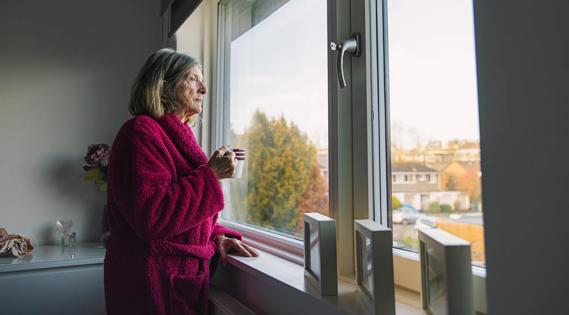Advertisement
Hope on the horizon

This article was originally published on December 7, 2020. It was updated on January 11, 2021, to reflect new information about this rapidly evolving situation.
Advertisement
Cleveland Clinic is a non-profit academic medical center. Advertising on our site helps support our mission. We do not endorse non-Cleveland Clinic products or services. Policy
After a fall filled with optimistic research and results, the first COVID-19 vaccines rolled out in December. And as we move deeper into the new year, more vaccine doses will be coming.
But there are still plenty of questions you probably have about what to expect, from which vaccines will be available first to who gets the first doses.
It’s a complicated and evolving situation, but as the distribution of the first vaccines nears, we’re getting a clearer picture as to what will happen.
You’ve probably read about a number of different COVID-19 vaccine trials but the focus right now is on two: a vaccine developed by the pharmaceutical company Pfizer, in conjunction with BioNTech, which is reported to be 95% effective, and a vaccine developed by Moderna, which has a similar effective rate of 94.5%.
These vaccines use an mRNA strategy which means that the vaccines each contain “messenger RNA,” molecules that include codes to build proteins to fight specific viruses. Those molecules cause the immune system to generate “spike” proteins like the ones the coronavirus uses to attach itself to human cells.
These newly-produced spike proteins don’t harm the host body but they do trigger an immune response that protects the body against a coronavirus infection. Both vaccines, though, require two doses a few weeks apart which means they’ll need to produce two doses for every recipient.
Advertisement
Both the Pfizer-BioNTech partnership and Moderna were awarded emergency use authorizations (EUA) from the U.S. Food and Drug Administration in December. This authorization allows the use of the vaccines even without full FDA approval or outside of the usual applications because of the current state of emergency.
For Pfizer, the FDA ruled the vaccine can be administered to patients 16-years-old and up while Moderna’s vaccine can be administered to patients 18-years-old and up.
Both Pfizer and Moderna distributed millions of doses of the vaccine before the end of 2020 and millions more will roll out throughout 2021.
There are a number of additional COVID-19 vaccine trials ongoing, too, from companies like AstraZeneca and Johnson & Johnson that could be ready for distribution in 2021, too.
This is perhaps the biggest question of the entire vaccine rollout. To that end, the U.S. Centers for Disease Control and Prevention’s (CDC) Advisory Committee on Immunization Practices has consulted with the National Academies of Sciences, Engineering and Medicine to come up with a four-phase approach.
Cleveland Clinic Chief Medical Operations Officer Robert Wyllie, MD, says, “There’s been a lot of work the last several months to ensure that we’re ready to get vaccines to the people who need it most as soon as the doses are available.”
Phase 1 will be broken into three parts that will focus on healthcare providers, essential workers and high-risk patients:
Phase 2 will be focus on patients considered to have moderately high-risk medical conditions as well as residents and staff of homeless shelters and group homes and inmates younger than 65 years old.
Phase 3 will focus on young adults, children (if the vaccine is deemed safe for them) and workers in various industries, including hotels, banking and higher education.
Finally, Phase 4 will focus on all other U.S. residents.
Because of the initially limited availability of doses early on, Dr. Wyllie notes there will be the need to prioritize recipients within each group involved in the first phases, especially among caregivers. It’s a difficult choice, he says, but one that’s imperative to make to ensure the health of caregivers tasked with direct contact and care of COVID-19 patients.
Advertisement
“It’s been a downward spiral in terms of growing infection rates among caregivers so it’s imperative we vaccinate them,” he says.
As of now, there’s no set date on beginning each phase or how long each phase will last but it’s likely most healthy Americans that don’t belong to one of the high-priority groups will begin receiving vaccinations in spring 2021 and into the summer.
For the early vaccinations, officials have chosen different distribution points in each state from which the doses can be rolled out. Among the factors used to determine these early distribution points are geography and the ability to not only administer the doses rapidly but also store them at the necessary temperatures.
The Pfizer vaccine has to be kept at temperatures of -70 degrees Celsius (-94 degrees Fahrenheit) while the Moderna vaccine must be stored at -20 degrees Celsius (-4 degrees Fahrenheit). This means the facilities holding the vaccines should be equipped with freezers capable of holding them at these temperatures.
Once those vaccines are in place, healthcare providers will need to administer doses to the necessary recipients quickly based on logistics put together by a multidisciplinary working group. The set-up will ensure timely distribution and minimize the time any doses are exposed to warmer temperatures.
Advertisement
Cleveland Clinic’s main campus has been tabbed as one of Northeast Ohio’s vaccine pre-positioning sites and delivery will happen in a very tight window. Jeffrey Rosner, RPh, Executive Director of Pharmacy Sourcing and Supply Chain Analytics in Cleveland Clinic’s Department of Supply Chain Management, points out, “Once the state notifies us that we have an allotment, those doses will be shipped to us within 24-to-48 hours.”
Down the road, when vaccine distribution begins to the broader public, it’ll be necessary to implement new plans that maximize geographic reach, ensure the proper number of caregivers to help administer the vaccines and to reach recipients who aren’t mobile, like in assisted-living facilities. This is particularly important since recipients will need to return several weeks later for a second dose.
The cold-storage requirements will also pose a challenge to that distribution. Says Dr. Wyllie, “Most people usually receive immunizations, like for the flu, at their doctor’s office. But because of the need to keep these doses in cold storage, it’s not as practical to dispense these out of a doctor’s office.”
Instead, he says, “We’re focusing on how we can set up those vaccination centers and what roles major health systems and pharmacies like CVS and Walgreens will play. We’ll get there but there’s still a tremendous amount of work to be done.”
Advertisement
Learn more about our editorial process.
Advertisement

Studies have shown promising results, but additional research is needed

Infection and inflammation can cause you to lose your voice and have other voice changes until you’re fully healed

A COVID-19 infection can bring on depression or anxiety months after physical symptoms go away

Just like the flu, COVID-19 continues to evolve every year with new and smarter variants

The latest omicron subvariants carry specific mutations that may allow the SARS-CoV-2 virus to be better at evading immune protection

You can work out with mild COVID-19, but not in a gym, and listen to your body and don’t overdo it

Most people can return to work and regular life when they’re symptom-free for 24 hours

Lysol Disinfecting Wipes are just one of more than 500 products approved by the EPA for protection against the SARS-CoV-2 virus that causes COVID-19

If you’re feeling short of breath, sleep can be tough — propping yourself up or sleeping on your side may help

If you fear the unknown or find yourself needing reassurance often, you may identify with this attachment style

If you’re looking to boost your gut health, it’s better to get fiber from whole foods